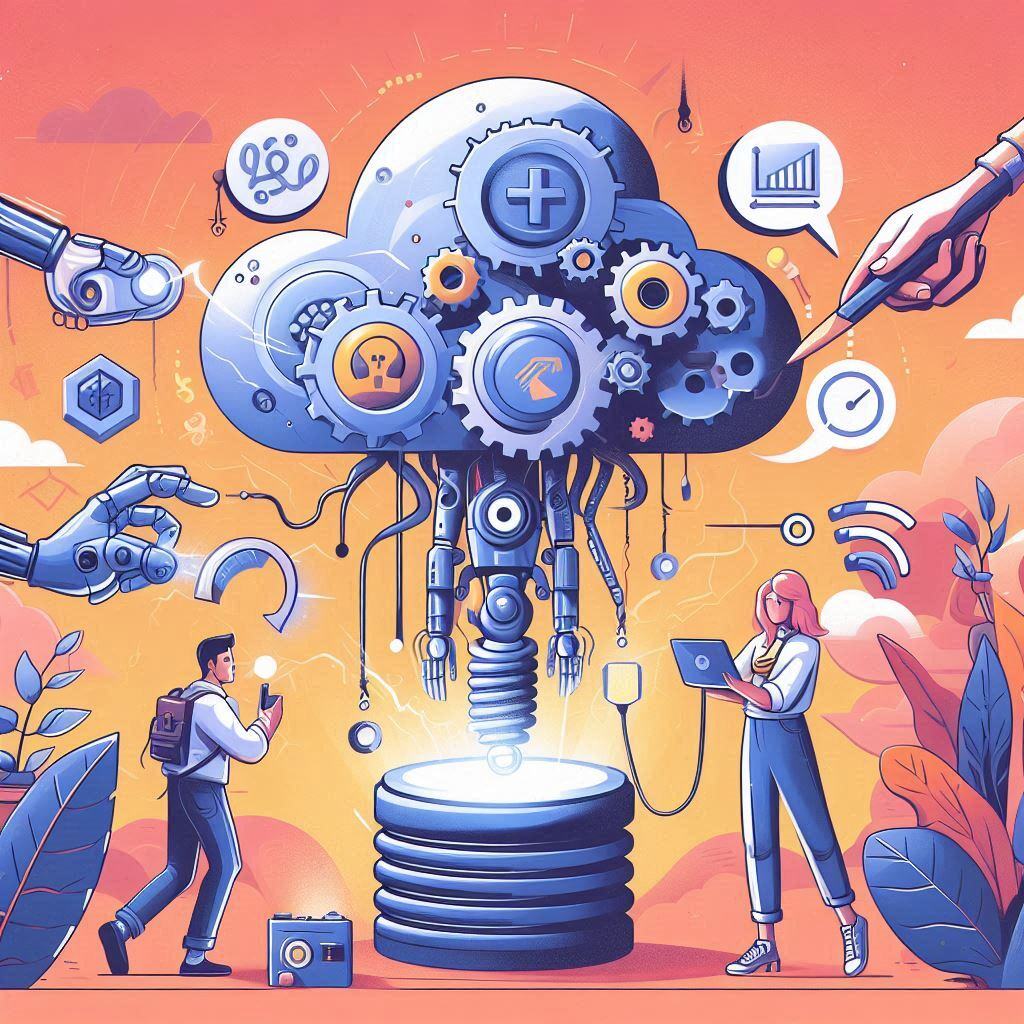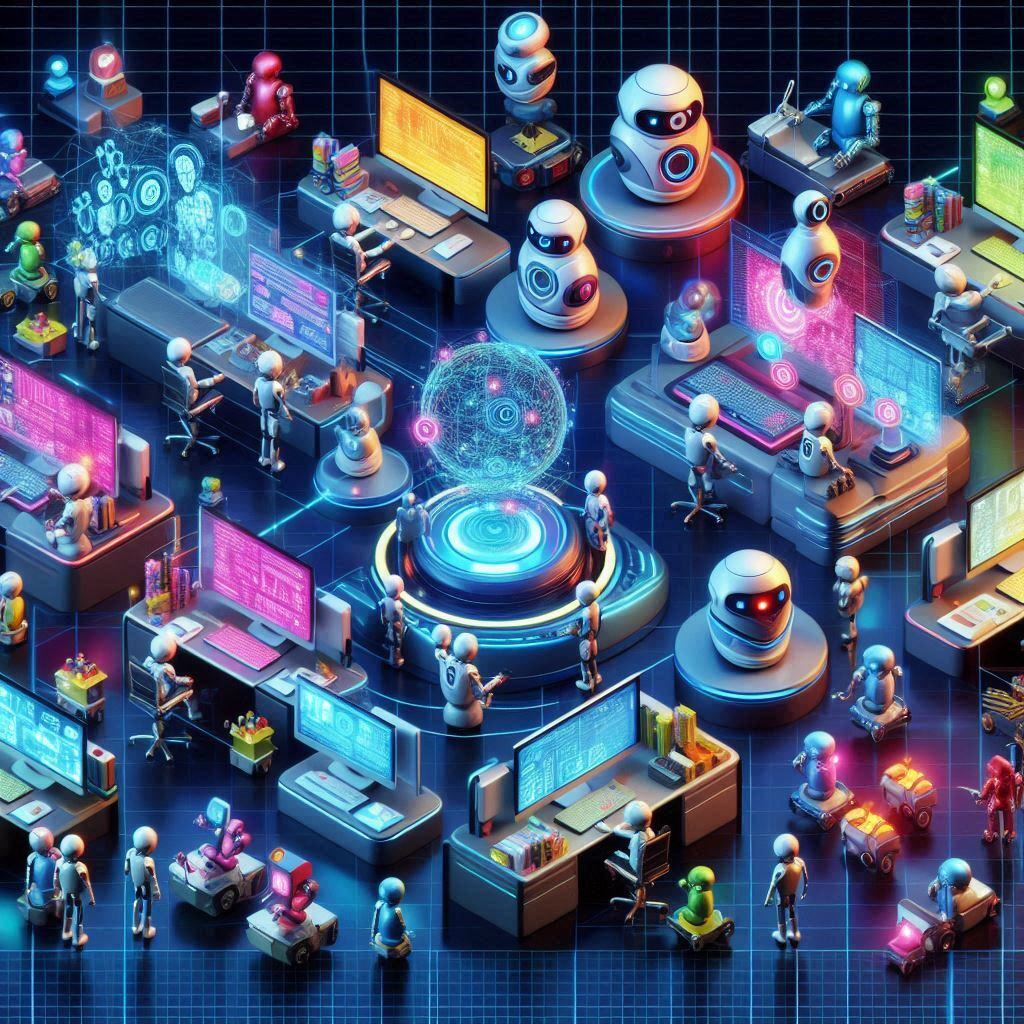5 RAG Best Practices
The field of artificial intelligence has seen significant innovation with the advent of Retrieval-Augmented Generation (RAG). This method merges...
Discover Retrieval-Augmented Generation (RAG), combining retrieval and generative models for accurate, relevant AI responses in various applications.
Artificial Intelligence (AI) has made significant strides in recent years, with new techniques and models revolutionizing various fields. One such innovative approach is Retrieval-Augmented Generation (RAG). This hybrid model enhances the capabilities of generative AI by incorporating a retrieval mechanism to access and integrate relevant information from external sources, thereby improving the accuracy and relevance of AI-generated responses.
Traditional generative models, such as GPT-3, generate text based on patterns and information they have learned during training. While these models can produce coherent and contextually appropriate text, they often struggle with specific, factual information that falls outside their training corpus. This is where RAG comes into play.
RAG combines two components:
The process of Retrieval-Augmented Generation can be broken down into three main steps:
Query Generation: When a prompt or question is presented to the RAG model, the first step is to generate a query. This query is designed to extract relevant information from an external database or a large corpus of text.
Retrieval: The generated query is then used to search through the corpus. The retrieval system selects the most relevant documents or snippets that could potentially contain the answer to the query. This retrieval step ensures that the generative model has access to accurate and up-to-date information.
Generation: Finally, the generative model takes the retrieved information and integrates it into the response. This step combines the creativity of generative AI with the factual accuracy of retrieval-based systems, producing a response that is both informative and contextually appropriate.
By integrating these steps, RAG ensures that the responses generated are not only coherent but also grounded in factual data.
RAG's versatility makes it applicable across various domains. Here are some key areas where RAG is making significant impacts:
Customer Support: RAG models can provide accurate and detailed responses by retrieving relevant information from a knowledge base. This reduces the dependency on human agents and improves response times, leading to better customer satisfaction.
Content Creation: RAG can assist content creators by providing factually accurate information embedded within creative text. This is particularly useful for writing articles, creating educational content, and drafting reports.
Healthcare: In the healthcare industry, RAG can help medical professionals by retrieving the latest research papers and integrating this information into diagnostic reports or treatment recommendations, ensuring that practitioners have access to the most current data.
Education: Educational tools powered by RAG can provide students with precise answers to their queries by accessing a wide range of educational resources, enhancing the learning experience.
Research and Development: RAG can aid researchers by quickly retrieving relevant literature and data, allowing them to generate comprehensive reviews and reports efficiently.
The combination of retrieval and generation offers several advantages:
Enhanced Accuracy: By leveraging external knowledge bases, RAG models can provide more accurate and reliable responses, reducing the incidence of incorrect or misleading information.
Contextual Relevance: The retrieval mechanism ensures that the generated content is contextually relevant to the query, improving the overall user experience.
Scalability: RAG models can scale effectively as they can access and integrate vast amounts of data, making them suitable for applications requiring extensive knowledge.
Versatility: The hybrid nature of RAG makes it versatile and adaptable to a wide range of use cases, from customer service to content creation and beyond.
Efficiency: Automating the process of information retrieval and generation can significantly reduce the time and effort required to produce high-quality content or responses.
RAG is particularly effective at addressing several common challenges faced by traditional AI models:
Hallucinations: Generative models sometimes produce information that appears factual but is incorrect, known as "hallucinations." By incorporating real-time retrieval of factual data, RAG significantly reduces the likelihood of hallucinations.
Dynamic Information Needs: In rapidly changing fields, such as medicine or technology, the ability to retrieve the most current information is crucial. RAG's retrieval component ensures that the responses are based on the latest available data.
Complex Queries: For complex or multi-faceted queries, a generative model alone might not suffice. RAG's retrieval mechanism can gather comprehensive information from various sources, providing a more complete and accurate response.
Data Limitations: Traditional generative models are limited by the data they were trained on. RAG extends the model's knowledge by accessing external databases, ensuring that the generated responses are well-informed and up-to-date.
Implementing RAG involves several technical steps, but the core process remains consistent across applications:
Corpus Preparation: Compile a comprehensive and relevant corpus of documents. This could include databases like Wikipedia, scientific journals, or specialized knowledge bases depending on the application.
Query Generation Algorithms: Develop algorithms capable of generating effective queries from user prompts. These algorithms must be able to interpret and transform natural language inputs into precise search queries.
Efficient Retrieval Systems: Utilize robust retrieval systems that can quickly search through the corpus and retrieve the most relevant information. This may involve vector search techniques that enhance search efficiency and accuracy.
Integration with Generative Models: Seamlessly integrate the retrieved data into the generative model to produce accurate and contextually enriched responses. This step requires fine-tuning the model to effectively utilize the retrieved information.
The future of RAG looks promising, with ongoing research and development focusing on enhancing its capabilities. Some potential future directions include:
Improved Retrieval Techniques: Advancements in retrieval techniques, such as the use of embeddings and vector searches, can make the retrieval process more efficient and accurate.
Domain-Specific RAG Models: Developing RAG models tailored to specific domains, such as law, finance, or medicine, can enhance their effectiveness by utilizing highly specialized corpora.
Integration with Other AI Technologies: Combining RAG with other AI technologies, such as reinforcement learning and symbolic reasoning, could further improve its ability to generate accurate and contextually relevant responses.
Enhanced User Interfaces: Developing user-friendly interfaces that allow users to interact more effectively with RAG systems can make this technology more accessible and practical for a broader audience.
Ethical Considerations: Ensuring that RAG systems adhere to ethical guidelines, such as data privacy and unbiased information retrieval, will be crucial as these technologies become more widely adopted.
Retrieval-Augmented Generation (RAG) represents a significant advancement in the field of artificial intelligence. By combining the strengths of retrieval-based systems and generative models, RAG offers a powerful solution for producing accurate, relevant, and creative responses. Its ability to retrieve and integrate real-time information makes it particularly valuable in fields requiring up-to-date knowledge and precise data.
How Integrail.ai Enhances RAG Capabilities
Integrail.ai is designed to maximize the potential of RAG by providing a comprehensive AI platform that simplifies the creation and deployment of custom AI applications. Here’s how Integrail.ai enhances RAG capabilities:
Integrail Studio: Offers a visual editor for designing complex multi-agent workflows without needing to code. This tool includes a benchmarking feature that allows users to compare different AI models and select the most suitable ones for their specific tasks. The workflow automation capabilities further streamline operations, making it easier to integrate retrieval and generation processes effectively.
Integrail Cloud: Provides a scalable and secure infrastructure for deploying AI applications. It offers real-time performance monitoring and seamless integration with existing tools and systems. This ensures that applications leveraging RAG run smoothly and efficiently, providing accurate and contextually relevant responses.
Key Benefits of Integrail.ai for RAG:
Explore Integrail.ai today and discover how you can leverage the power of Retrieval-Augmented Generation to transform your business processes and achieve unparalleled efficiency and accuracy.

The field of artificial intelligence has seen significant innovation with the advent of Retrieval-Augmented Generation (RAG). This method merges...

Creating "pragmatic AGI" (artificial general intelligence) with current technology is achievable without waiting for future advancements like GPT-5...

In recent years, the rise of ChatGPT has captured global attention, with many leveraging it for various tasks and some exploring alternatives from...
Start your journey with Integrail

Try AI Studio by Integrail FREE and start building AI applications without coding.

NEW White Paper: Discover how AI Studio accelerates your workflows